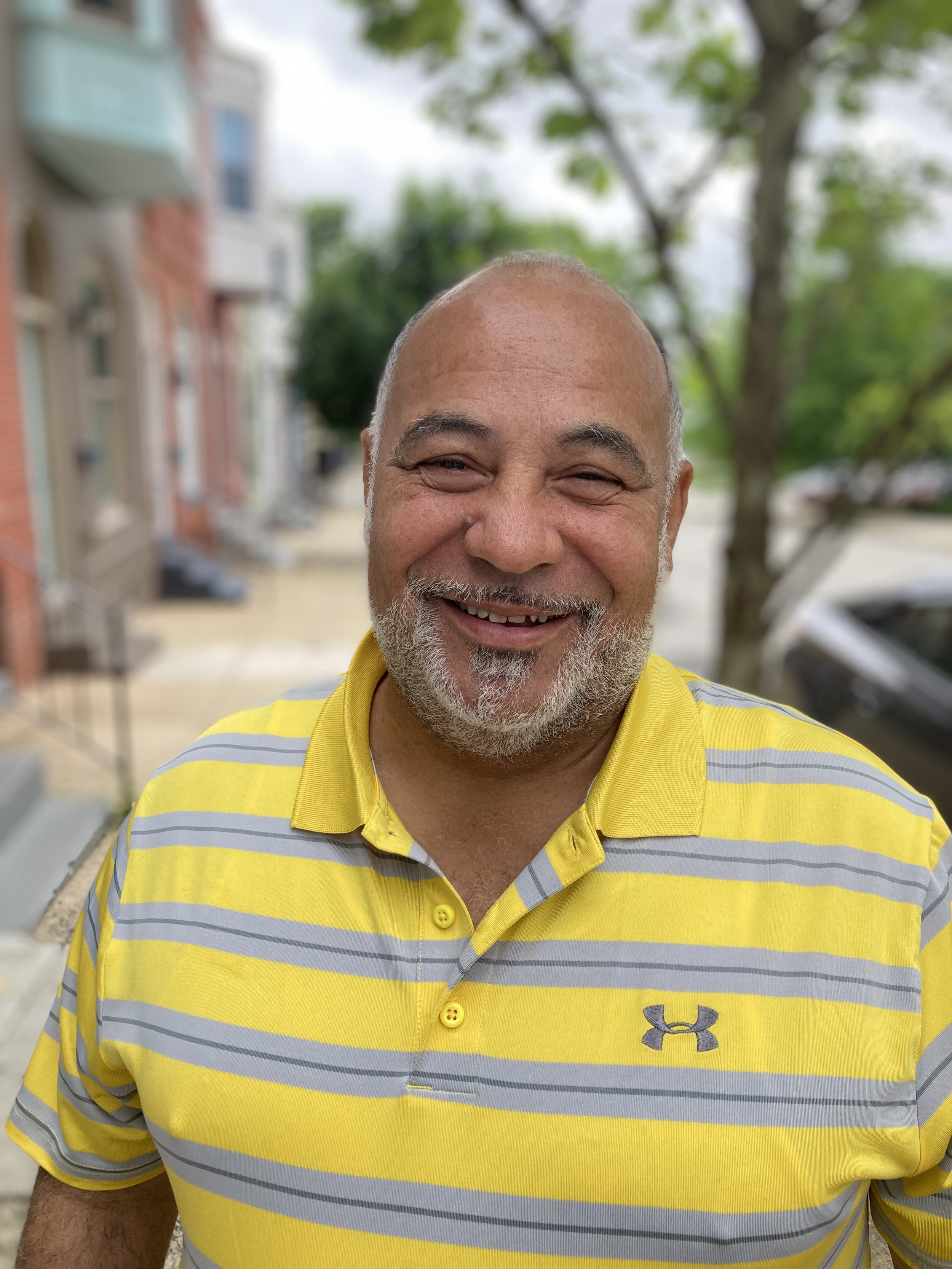HISTORY
A Community-Led Initiative with a Deeply-Experienced Technical Advisory Team
The proposal for Smart Line grew out of the desire of the Central West Baltimore community to maximize the economic development potential of the West Baltimore MARC Station, by finally getting some sort of rapid East-West rail project (which would in theory connect at the station) underway. Critical to both of those desires was always going to be not just if, but how, those local and regional transportation lines would interact.
As it turns out, in 2022 Amtrak was designing a new West Baltimore MARC Station to replace the current stop, as part of its B&P/Douglass Tunnel project. But the deadline for making any changes to that design was rapidly approaching, and nothing at all was apparently being scoped in for a local rail interchange. So the Edmondson Community Organization - whose neighborhood boundaries include the MARC station and the community directly north - sought to catalyze action.
They began seeking out the advice of some of the most experienced transportation, planning, architecture and engineering minds in the city and state. Ultimately, with the assistance and guidance of Al Barry of AB Associates, they assembled a volunteer technical advisory group of some of those experts, and tried to come up with a realistic, yet aspirational plan for East-West Rail that would connect at the MARC station. Smart Line is that group’s effort to bring an east-west design from concept to paper.
COMMUNITY TEAM
Joe Richardson, President, Edmondson Community Organization
Joe came to the ECO (and Smart Line) from the organized labor world, where he served in the Local 1199 SEIU United Healthcare Workers union. A 20-year resident of Baltimore and an owner in Midtown-Edmondson, he believes deeply in the area’s potential as an equitably-revitalized center of Baltimore’s African-American community. He grew up in New York, and his experience there, during that city’s transformation from bankruptcy to boomtown, tells him that development will find its way to communities with storied histories, great locations and world-class architecture. He just wants to ensure that that redevelopment happens now instead of 20 or 30 years from now. And most important, he wants to make sure that the benefits of that revitalization accrue, firstly, to the existing residents and stakeholders. Smart Line would be key to all of those efforts.
Email: jrich.eco@gmail.com
Jonathan Sacks, Executive Director HUB West Baltimore CDC
(HUB West Baltimore is the development unit of the ECO)
Jonathan was born and raised in West Baltimore (Bolton Hill), and is a fourth generation West Baltimorean - with his father, grandmother and great-grandmother living and growing up eight blocks north of the West Baltimore MARC Station. Consequently he understands both the potential of the MARC Station area, as well as how far short we’ve fallen in realizing that potential up to now. He has transportation planning experience with the Baltimore-Washington Transportation Research Group, and development experience in Washington. Living in DC for almost two decades, he had a front row seat to that city’s torrid pace of revitalization, but also to its true marginalization of groups left out of the benefit equation. He believes things could be done differently in development in West Baltimore - and that good planning, quality government leadership, a recognition of structural racism’s continued effects on the city today, and a firm commitment to right those wrongs are the keys. His academic background is in regional economic development and finance. He has degrees from the University of Pennsylvania and the Wharton School.
Email: Jsacks@hubwestbaltimore.org
VOLUNTEER TECHNICAL ADVISORY TEAM
Al Barry, Principal of AB Associates
Al is a former Baltimore City Assistant Planning Director where he managed the Department's Land Use approvals, as well as the Transportation and Environmental Divisions. He also represented the City on the Metropolitan Planning Council's land use and transportation committees. While at AB Associates, he has prepared over a dozen community master plans including those for the rebuilding of Flag House Courts for the Flag House Tenant Council and the Upton Master Plan for the Upton Planning Council.
Gerald Neily, former Baltimore City Transportation Planner
Gerald was a transportation planner for the Baltimore City Department of Planning from 1977 to 1996, and served as the City's primary planning liaison to the Maryland Transit Administration for all their Baltimore rail transit plans during those years, which included the entire system built as of now. He was also the first transportation planner to call for the dismantling of the Route 40 "Highway to Nowhere,” outlining his proposed principles in a 2006 blog post. He then formulated a plan to optimize the existing corridor topography in a 2012 blog post called "The Low Line", some key elements of which have been incorporated into Smart Line.
David Benn, Architect and Co-Founding Partner of Cho, Benn, Holback and Associates
David has been involved with transit design and planning since the 1990s, including guiding MTA studies on light rail, Red Line and MAGLEV. He has studied countless TOD options and station designs, and has worked on a number of award-winning historic preservation projects. And as a member of the AIA Urban Design Committee since its founding, he has been committed to connecting and reinforcing communities.
James Leanos, Commercial Realtor
Jim is a retired commercial real estate broker with over 50 years of experience in Maryland and over $1 billion in closed transactions. He’s been a board member of the Greater Baltimore Board of Realtors and the Neighborhood Design Center, and a member of the Baltimore Regional Transportation Board’s Citizen Advisory and Vision 2030 Oversight Committees, as well as Greater Baltimore Committee’s Transportation-focused workgroup.
In addition, the team has consulted with a number of other transportation-focused engineers and planners - all deeply experienced with city and state projects - as well as numerous key community, institutional, business and elected leaders.


